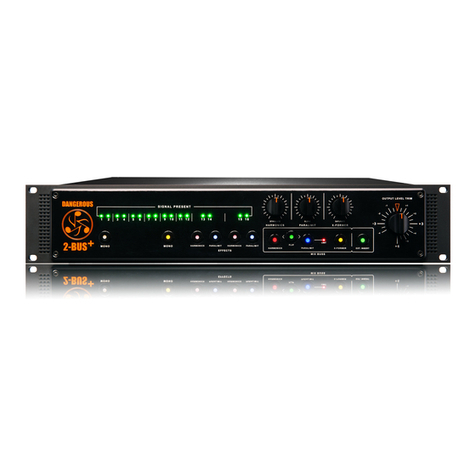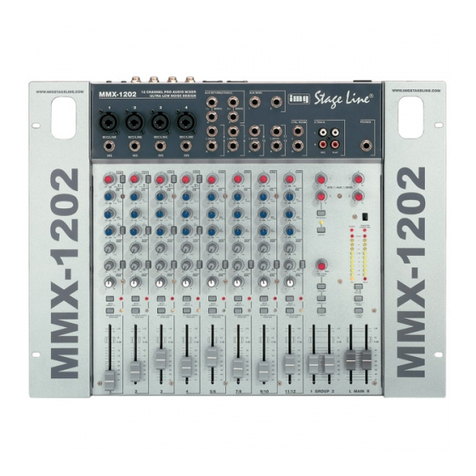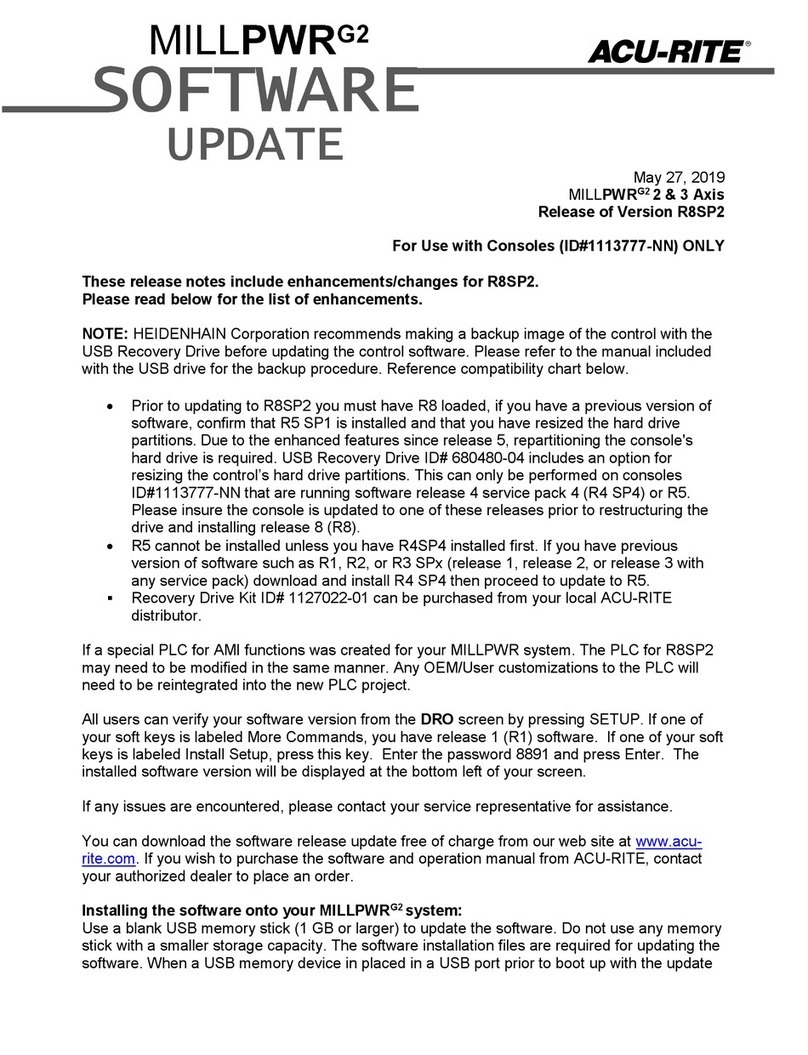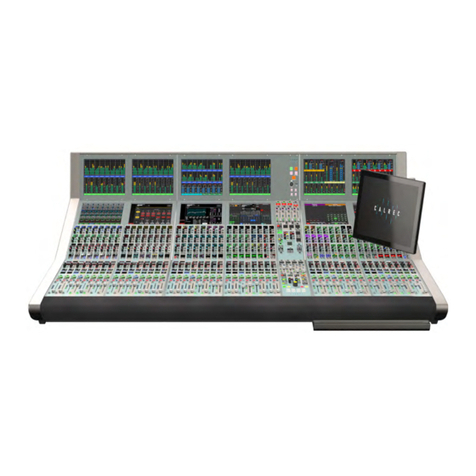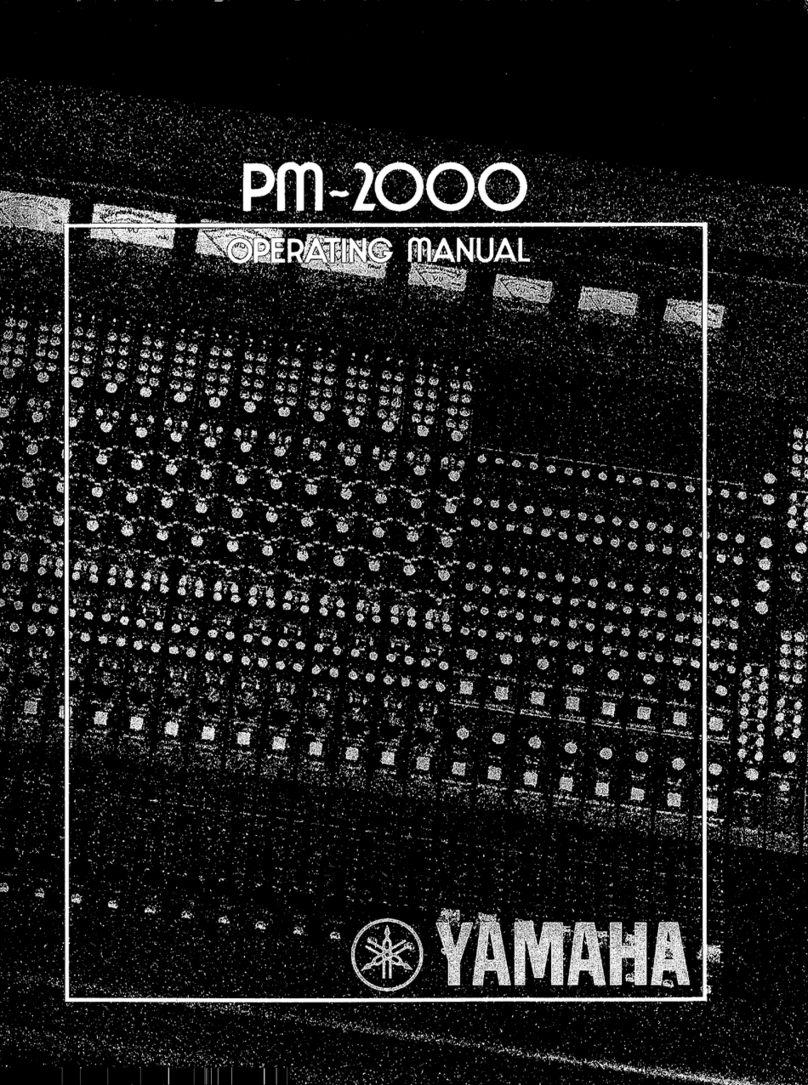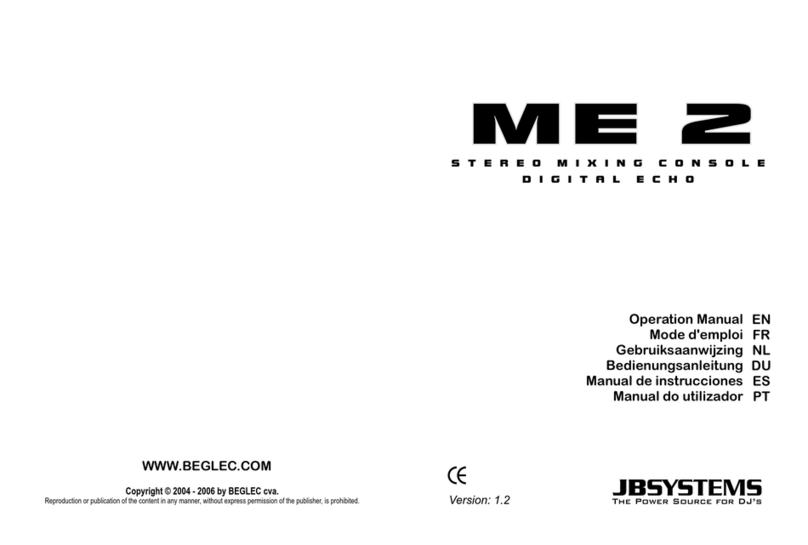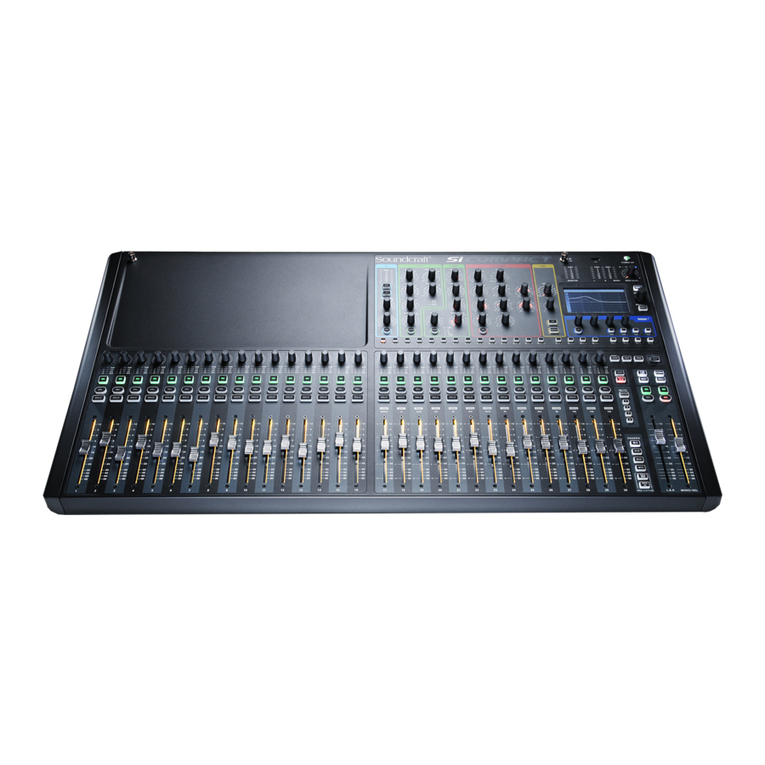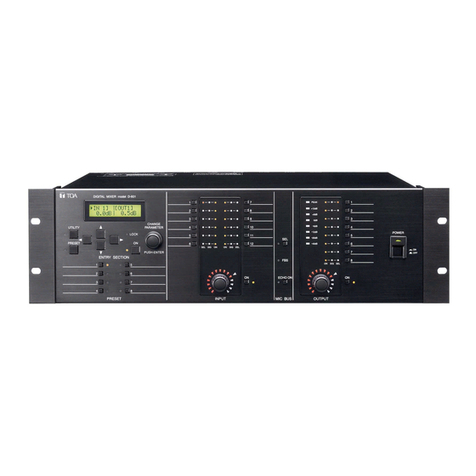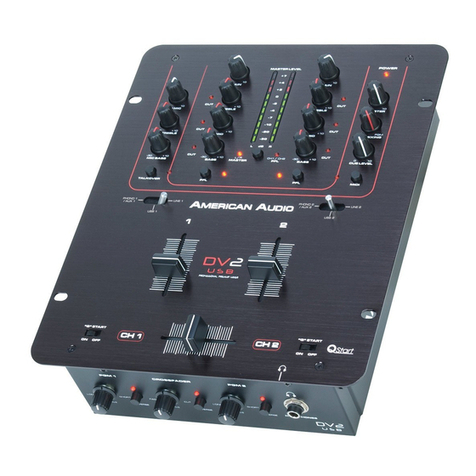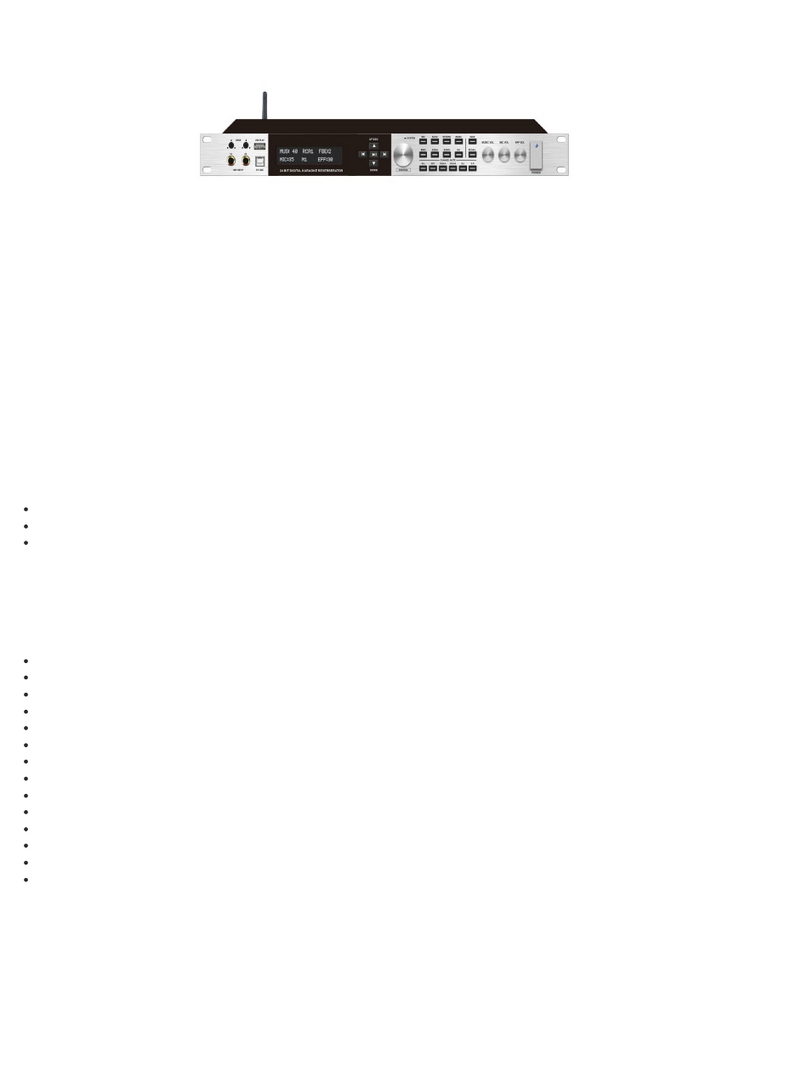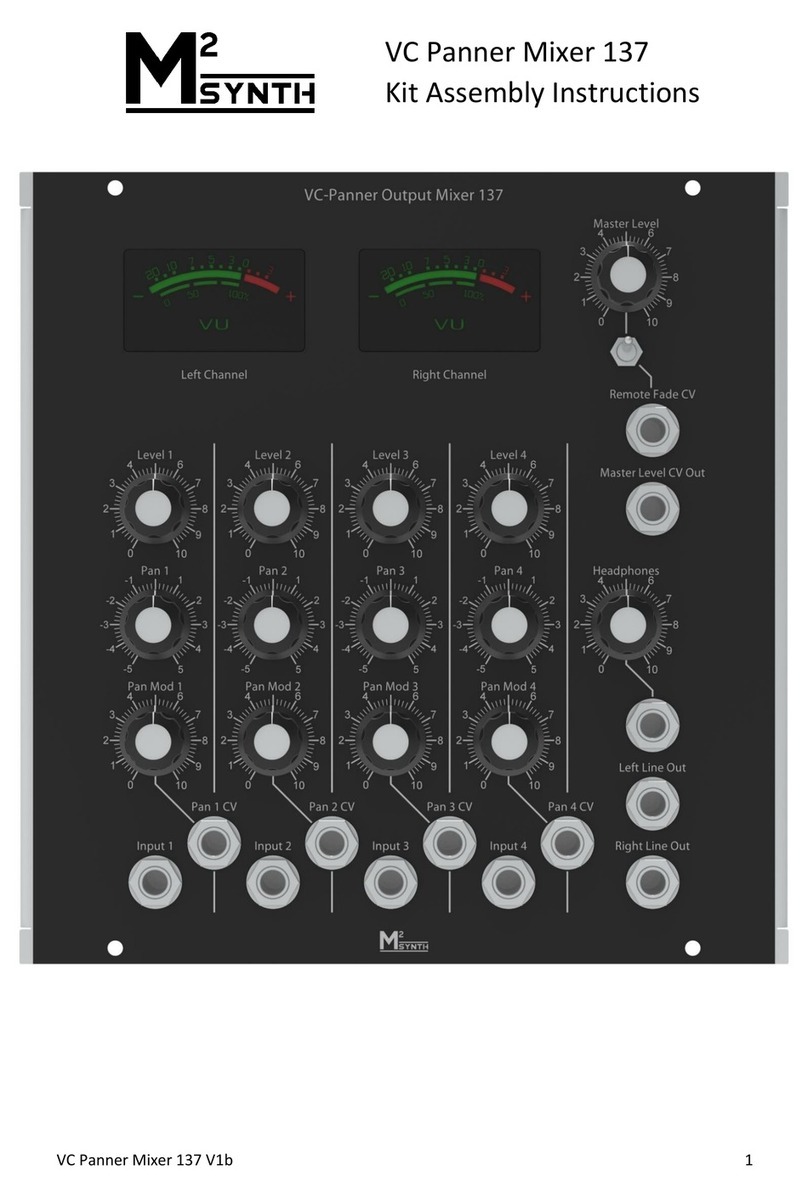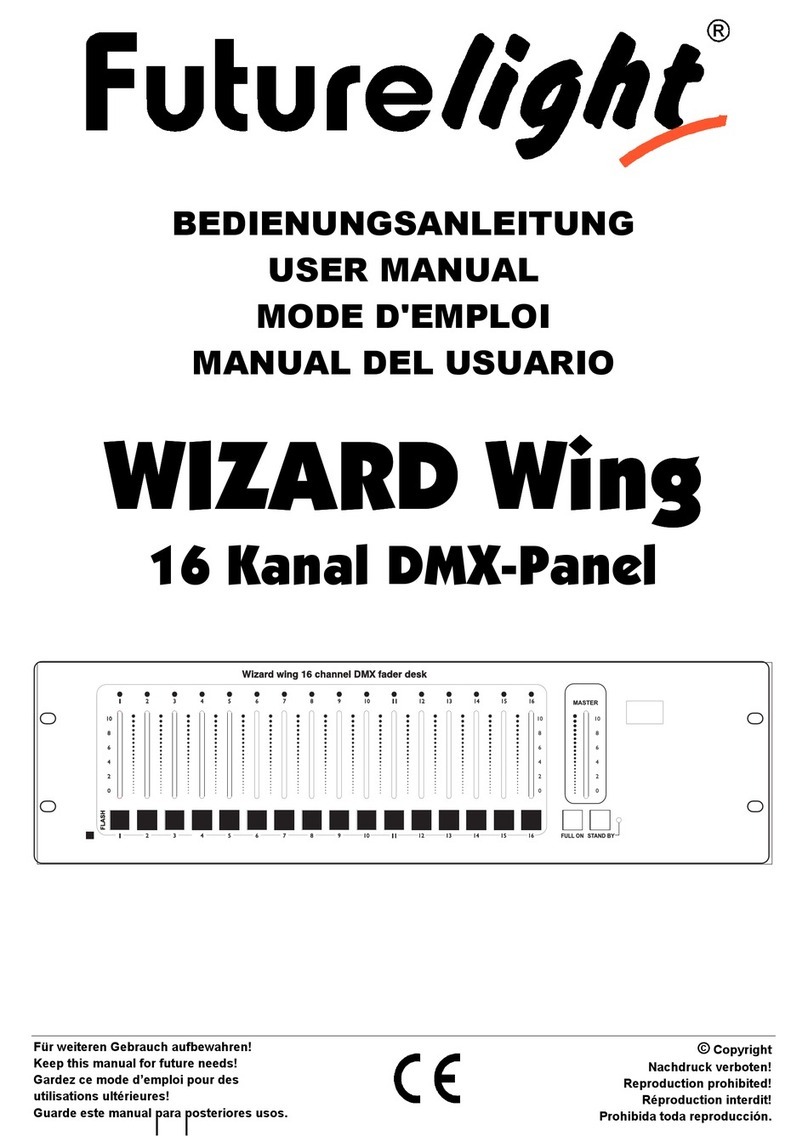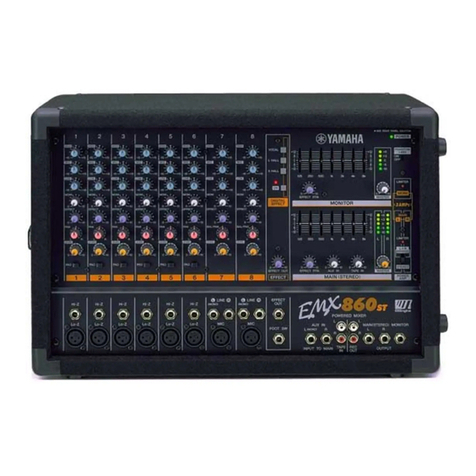Telex Communications Forum FOH User manual

Forum FOH
User Manual
Klark Teknik Building
Walter Nash Road
Kidderminster
Worcestershire
DY11 7HJ
Tel: +44 (0) 1562 741515
Fax: +44 (0) 1562 745371
Email: [email protected]
Website: www.ddaconsoles.com
Forum FOH User Manual
Telex Communications (UK) Limited
In line with the company’s policy of continual improvement, specifications and function maybe subject
to change without notice. This Operator Manual was correct at the time of writing. E&OE.

FORUM OPERATION AND MAINTENANCE MANUAL 9601 PAGE 2
Contents
DECLARATION OF CONFORMITY......................................................... 3
INTRODUCTION ........................................................................................ 4
SAFETY PRECAUTIONS........................................................................... 5
TRANSPORT ............................................................................................... 6
ATTENTION................................................................................................ 6
WARRANTY................................................................................................ 7
SPECIFICATIONS ...................................................................................... 9
GLOSSARY ................................................................................................11
MODULE DESCRIPTIONS...................................................................... 16
MONO INPUT MODULE ......................................................................... 18
MONO MUTE INPUT............................................................................... 23
STEREO INPUT MODULE ...................................................................... 25
THE STEREO MUTE INPUT MODULE ................................................. 31
THE DUAL EFFECT RETURN MODULE.............................................. 32
6 INTO 1 MICROPHONE INPUT ............................................................ 34
THE DIGITAL STEREO INPUT MODULE............................................. 36
10 WAY SELECTOR MODULE ............................................................... 41
THE STANDARD OUTPUT MODULE ................................................... 44
THE MATRIX OUTPUT MODULE ......................................................... 49
COMPOSER OUTPUT MODULE............................................................ 53
STEREO MASTER MODULE.................................................................. 57
GENERAL SERVICING............................................................................ 61
POWER SUPPLY....................................................................................... 62

FORUM OPERATION AND MAINTENANCE MANUAL 9601 PAGE 3
Declaration of Conformity
The Manufacturer of the Products covered by this Declaration is
Klark Teknik Building, Walter Nash Road, Kidderminster, Worcestershire, DY11 7HJ.
The Directives Covered by this Declaration.
89/336/EEC Electromagnetic Compatibility Directive, amended by 92/31/EEC & 93/68/EEC
73/23/EEC Low Voltage Equipment Directive, amended by 93/68/EEC.
The Products Covered by this Declaration.
Equipment type Product Name Variants
Audio Mixing Console Q2 Q2 VCA
Audio Mixing Console Q2 Monitor Meterbridge
Audio Mixing Console QMR Meterbridge
Audio Mixing Console FMR
Audio Mixing Console Forum PA,Matrix,Mute
Audio Mixing Console Forum Monitor Meterbridge
Audio Mixing Console XL200
Audio Mixing Console XL250
The Basis on which Conformity is being Declared
The products identified above comply with the protection requirements of the EMC Directive and with the principal elements of
the safety objectives of the Low Voltage Directive, and the manufacturer has applied the following standardsQ
EN 55013 Q 1990
Limits and methods of measurement of radio disturbance characteristics of Broadcast Receivers and Associated Equipment.
EN 50082-1 Q 1992
Electromagnetic Compatibility - Generic Immunity Standard Part 1. Residential, commercial and light industry.
EN 60065 Q 1994
Safety requirements for mains operated electronic related apparatus for household and similar general use.
The technical documentation required to demonstrate that the products meet the requirements of the Low Voltage Directive has
been compiled by the signatory below and is available for inspection by the relevant enforcement authorities. The CE mark was
first applied in 1996.
SignedQ ................................ G.M.Squires
AuthorityQ Product Support Manager.
DateQ 1st, January 1997.
Attention
The attention of the specifier, purchaser, installer, or user is drawn to special measures and limitations to use which must be
observed when these products are taken into service to maintain compliance with the above directive. Details of these special
measures and limitations to use are available on request, and are also contained in product manuals.

FORUM OPERATION AND MAINTENANCE MANUAL 9601 PAGE 4
The Forum console is a high quality console, designed for use in
live sound and recording applications. Two output modulesR a
standard output module and a matrix output module are available,
along with a number of input modules as follows Q-
!mono standard input and mono mute input
!stereo input and stereo mute input
!dual effect return
!digital stereo input
!10 way selector
!6 into 1 microphone module
The Forum is normally supplied as a FORUM P.A. or as a FORUM
MATRIX and the frame will accommodate up to 60 modules.
Normally the master module, a double blank module and the 8
output modules will occupy 12 of those positions with the
remainder being available for input modules. An 8 module wide
frame extender can be fitted where additional modules are required
on an existing console or to increase the maximum frame size to 68
modules.
INTRODUCTION

FORUM OPERATION AND MAINTENANCE MANUAL 9601 PAGE 5
SAFETY
PRECAUTIONS IMPORTANT - PLEASE READ BEFORE
INSTALLING YOUR FORUM CONSOLE
Strong sources of electromagnetic radiation e.g. high power
cabling, video monitors and radio transmitters may cause
degradation of of the audio quality due to induced voltages in the
chassis and connection leads. Site the console away from such
sources. For the same reason it is advisable to site the power supply
away from the console.
!Electronic components are susceptible to conditions of
excessive heat or extreme cold so take care not to use
your console under such conditions.
!Before powering up the console make sure that the
power supply voltage selection matches the local mains
supply.
!Never connect or disconnect the power cable with out
switching off the power supply. Similarly switch of the
console before removing or servicing modules.
!Do not attempt to wipe clean the console with a
cleaning liquid. Most surfaces can be simply cleaned
with a soft dry brush. Should the chassis or channel
ident strips need cleaning use only water or an alcohol.
Solvent based products should not be used as they will
damage these parts.
If you spill any liquids in the console e.g. coffee on the faders
switch off the power supply immediately. Consult you authorised
dealer before attempting any cleaning.

FORUM OPERATION AND MAINTENANCE MANUAL 9601 PAGE 6
TRANSPORT We recommend that you retain all the packing from your FORUM
console should you ever need to return it for service or move the
console to other prenises.
If the console has to be moved regularly then we suggest that you
purchase a foam lined flight case available from your distributor if
you cannot purchase one locally.
Only use the power supply and cables provide. Your warranty is
invalidated if other supplies or cables are used.
If you experience any problem with the local mains, or during
thunder storms, switch off the power supply and unplug it from the
mains supply.
CABLES
This product should only be used with high quality, screened
twisted pair audio cables, terminated with metal bodied 3-pin XLR
connectors. The cable shield should be connected to Pin 1. Any
other cable type or configuration for the audio signals may result in
degraded performance due to electromagnetic interference.
ELECRIC FIELDS
Should this product be used in an electromagnetic field that is
amplitude modulated by an audio frequency signal P20Hz -
20Khz), the signal to noise ratio may be degraded. Degradation of
up to 60dB at a frequency corresponding to the modulation signal
may be experienced under extreme conditions P3V/m, 90%
ATTENTION

FORUM OPERATION AND MAINTENANCE MANUAL 9601 PAGE 7
WARRANTY If within a period of twelve months from the date of delivery of the
equipment to the End User it shall prove defective by reason only
of faulty materials and/or workmanship Pbut no faulty design) to
such an extent that the effectiveness and/or the usability thereof is
materially affected, the Equipment or the faulty component shall be
returned to the Distributor or DDA and subject to the following
conditions the Distributor or DDA will repair or at its option
replace the defective components. Any components replaced will
become the property of DDA.
Any Equipment or component returned will be at the risk of the
End User whilst in transit Pboth to and from the Distributor or
DDA) and postage and/or freight charges must be prepaid.
This Warranty shall only be available ifQ-
i) The Equipment has been properly installed in accordance
with the instructions contained in this manual.
ii) The End User has notified the Distributor or DDA in writing
within 14 days of the defect appearing.
iii) No persons other than authorised representatives of DDA or
the Distributor have effected any replacement of parts,
maintenance adjustments or repairs to the Equipment.
iv) The End User has used the Equipment for such purposes as
DDA recommends with only such operating supplies as meet
DDAís specifications or approval and otherwise in all
respects in accordance with DDAís recommendations.
Defects arising as a result of the following are not covered by this
Warranty Q -
Faulty or negligent handling, chemical or electro-chemical or
electrical influences, accidental damage, Acts of God, neglect,
defficiency in electrical power, air conditioning or humidity
control.

FORUM OPERATION AND MAINTENANCE MANUAL 9601 PAGE 8
DDA shall not be liable for any damage caused to persons
or property due to Q-
i) Incorrect usage of the Equipment
ii) Other equipment attached to the Equipment, which is not
approved by DDA
iii) Modifications made by non-authorised persons, or by using
non-recommended parts, or incorrectly made.
In no circumstances shall DDA be liable for any indirect or
consequential costs, damages or losses Pincluding loss of business
profits, operating time or otherwise) arising out of the use or
inability to use the product, whether or not the likelihood of
damage was advised to DDA or its distributor.
Fuses and lamps are specifically excluded from this warranty.
This notice does not affect your statuatory rights.
Benefit of this Warranty may not be assigned by the End User.
End Users who are consumers should note that their rights
under this Warranty are in addition to and do not affect any other
rights to which they may be entitled against the seller of the
Equipment.

FORUM OPERATION AND MAINTENANCE MANUAL 9601 PAGE 9
SPECIFICATIONS Note Q All specifications relate to dBu, ie 0dBu = 0.775V RMS
Maximum Gain
Mic Input to Mix OutputQ 86dB
Line Input to Mix OutputQ 30dB
Frequency Response
Mic Input to Mix OutputQ 20Hz , -0.50dB
Pgain 55dB) 20kHz, -0.20dB
Line Input to Mix Output 20Hz , -0.50dB
Pgain 0dB) 20kHz, -0.20dB
Noise, DIN Audio Weighted
Microphone Input
Gain 55dB, EIN Ref 200 Ohm S-127.5dBu
Line Input to Mix Output
Gain 0dB, 16 inputs routed S-84dBu
Distortion
Microphone Input to Mix Output
-50dBu input, +4dBu output S0.005%
Line Input to Mix Output
+4dBu input, +4dBu output S0.005%
Crosstalk
Adjacent Channel, 1kHz S-100dBu
Group to Mix, 1kHz S-78dBu
Fader Attenuation, 1kHz S-85dBu
Panpot Isolation, 1kHz S-72dBu

FORUM OPERATION AND MAINTENANCE MANUAL 9601 PAGE 10
LED Bargraph Metering P20 segment)
Rise Time to 0dBu Peak Q 1mS
Average Q 150mS
Release Time to -20dBu Peak Q 2 S
Average Q 250mS
Accuracy Prelative to 0dB) +/-0.5dB
Forum Power Supply specifications
AC Mains Voltage selectionQ
Internal link settings for 90V, 100V, 120V, 220V, 230V, and 240V
Power Consumption Pmax) Q
AC Mains frequency Q 50Hz...60Hz
Fuse ratingsQ 220/230/240V - 6.3A
90/100/120V - 10A
Cooling MethodQ Internal fan
DC Power OutputsQ
+17 Volts, 6A max
-17 Volts, 6A max
+48 Volts, 0.35A max

FORUM OPERATION AND MAINTENANCE MANUAL 9601 PAGE 11
This section provides a simple explanation of some of the terms
used when describing the console features.
ìAî GAUGE JACK
This is a 1/4O jack which has a large tip diameter compared with a
ìBî gauge jack which has a smaller diameter tip and is usually
found in broadcast use.
AFL
After fade listen. For listening to post fade signals.
AUXILIARY SENDS
These are extra signal paths out of the console which are separate
from the main mix and group outputs. Each auxiliary output is like
a separate mixer and can be controlled independently of the main
faders. They are used to provide special mixes to artistes as they are
recording Pnormally called FOLDBACK) or as a signal to be sent
to an effect such as a reverberation or delay device.
BUS
This is the term used to describe the summing or mixing of
a number of signals. A number of signals routed to the same bus
will appear as one signal at the output of the bus mixing
amplifier.
BUS TRIM
A control used to adjusted the level of all signals
going to a Group Output.
CHANNEL PATH
The path used by the signal going to tape in an in-line console.
D.I.
Direct Inject is an input used for high level devices such
as keyboards where the line input would not be sensitive enough.
DIM
This reduces the monitor level by a preset amount, usually
20dB in DDA products.
GLOSSARY

FORUM OPERATION AND MAINTENANCE MANUAL 9601 PAGE 12
DIRECT OUTPUT
This refers to the individual output of a channel which is available
even if the channel is not routed.
EBO
Electronically Balanced Output.
EQ
Equalizer or Tone Control.
FOLDBACK
This is the signal which is usually fed to the artistes
headphones.
GROUND SENSING OUTPUT
An output stage where any ground noise is injected into the
feedback loop in such a way that it appears on the amplifier output.
As the ground should be the reference for the following stage, if it
is moving and the signal is moving in the same way then no net
signal results.
GROUP OUTPUT
An output usually routed to a multi-track tape
recorder input. This output is derived from a bus and one group
output stage is required for each bus. PDMR12 excepted)
HF
High Frequency
HIGH PASS FILTER
A filter which cuts out frequencies below its
operating frequency. It can be used to filter out rumble picked
up by a microphone for example.
INSERT POINT
Sometimes referred to as a patch point. This is an
interruption to the signal path to allow for the insertion of a
signal processing device. In an in-line console such as the DCM
it can be in either the mix or channel path Pswitchable).

FORUM OPERATION AND MAINTENANCE MANUAL 9601 PAGE 13
LF
Low Frequency.
LINE INPUT
An input designed to accept high level signals as
opposed to microphone level signals. The expected level is
usually +4dB but increasingly inputs and outputs are being
designed so that they can be altered to operate at -10dBV which
is now quite a common operating level.
LOW PASS FILTER
This is the inverse of a HIGH PASS filter and is used to reduce
frequencies above the operating frequency
MASTER
This normally refers to the main stereo output section
which controls the level of the stereo mix and associated
functions such as monitoring.
MIX PATH
The path used by the signal going to the stereo mix.
PARAMETRIC EQ
An equaliser section which has variable frequency, level and Q.
PAN
A pan control or Pan Pot or Panoramic Potentiometer is used
to spread a mono signal across a stereo bus. In the centre the
signal is reduced by 4.5dB to compensate for the effects of
summing to mono.
PEAKING EQ
In this form of equaliser the response is tailored to enhance a
selected frequency relative to the frequencies above
and below it. Peaking equalisers are normally used as the mid
sections of an equaliser.
PFL
Pre-fade listen. For listening to pre fade signals.

FORUM OPERATION AND MAINTENANCE MANUAL 9601 PAGE 14
PRE
A signal derived before a fader and therefore not dependant
upon the position of the fader.
POST
A signal derived after a fader and therefore dependant upon
the position of the fader.
Q
Associated with peaking equalisers the Q is the factor which
describes how wide the peak or trough of enhancement is. The
smaller the Q the wider the bandwidth of the equaliser will be.
Typically a fixed Q equaliser will have a Q of about 1.5 equating
to a bandwidth of about 1 octave.
QUASI BALANCED
An arrangement whereby a bus is terminated with a differential
input. The bus however is not truly balanced, instead a bus
common is used to pick up any interference which will also be
picked up by the true bus. The interference then
appears as a common mode signal at the mixing amplifier.
RETURN
Any signal that is sent out of the console and is returned after some
form of processing.
ROUTING
The sending of a signal to a bus normally by pressing a switch.
Signal can be routed to several buses simultaneously
if required.
SEND
The output from a channel insert point is called the send.
SHELVING EQ
This means that the response of the equaliser becomes constant
after the turnover or corner frequency has been passed. Thus a high
frequency shelving equaliser operating at 10k will have a rising
response as the frequency approaches 10k but will be flat after 10k.
This is normally used on the high and low frequency sections of an
equaliser.

FORUM OPERATION AND MAINTENANCE MANUAL 9601 PAGE 15
SLATE
The ability to talk to tape from the operating position of the
console. On the DCM it is possible to slate both the multi-track
group outputs and the stereo mix bus.
SIP
Solo in Place
SWEEP FREQUENCY
A control which selects a centre frequency to operate around. Most
often used with peaking equalisers but it can also be used to
determine the roll off point of shelving EQs as well.
VCA
Voltage Controlled Amplifier. An amplifier whose gain can be
controlled by a DC Voltage applied to its control port.
XLR
The XLR Pin fact a specific manufacturer's model reference) is an
industry standard connector of high quality and is normally used
for balanced signals, primarily microphones and balanced outputs.
The most common is a three pin version, although there are types
with more pins for ther purposes.

FORUM OPERATION AND MAINTENANCE MANUAL 9601 PAGE 16
MODULE DESCRIPTIONS
The input modules are provided with rear panel connectors for
Microphone Pon XLR), and Line Pjack), both balanced. Insert send
and return signals are available on a single stereo jack socket, and
are unbalanced. A Direct Output, unbalanced and ground sensing,
is also available via a jack socket on the rear panel.
Wiring of the XLR and jack connectors follows normal
conventions, so that compatibility with existing cables is provided
where possible.
XLRQ Pin 1 Ground
Pin 2 Signal +ve Phot)
Pin 3 Signal -ve Pcold)
Jack Line Insert Direct Output
Tip Hot P+ve) Send Hot P+ve)
Ring Cold Return Ground Sense
Sleeve Ground Ground Ground
Blanking panels are fitted to the main chassis to allow the fitting of
multiway connectors. Consult your authorised dealer for more
information.
All balanced XLR inputs are wired to the international standard of
Pin 2 HOT. If you need to connect unbalanced equipment to inputs
or outputs, wire the cold terminal to Pin 3 for XLRs or the Ring for
jacks.
The microphone input is suitable for use with balanced, low
impedance microphones P150-200 ohms).
Do not use dynamic, unbalanced or battery powered microphones
with the +48 volt phantom power switched on damage to the
microphone may result.
The gain of this section is variable from 6dB to 76dB, to give an
output of +4dB at the stereo mix outputs. This corresponds to a
sensitivity of -2dBu to -72dBu.

FORUM OPERATION AND MAINTENANCE MANUAL 9601 PAGE 17
With the gain control at minimum, the maximum input level is
+14dBu without the 20dB pad.
The gain of the line input may be adjusted from -10dB to +20dB
corresponding to a sensitivity of +14dBu to -16dBu to give an
output of +4dBu at the stereo mix outputs.
The impedance of the line input is approximately 20Kohms, so
instruments with high impedance outputs such as electric guitars
are best fed through a DI box to the microphone input to avoid
being loaded down by the line input impedance.
.

FORUM OPERATION AND MAINTENANCE MANUAL 9601 PAGE 18
+48V
Provides 48 volt phantom power for a condenser microphone, or DI
box. Optional balancing transformers may be fitted on the Mic
input.
PAD
Switching in PAD inserts a 20dB attenuator in circuit with the
microphone input. This may be used when high-output
microphones are employed, or to enable the use of the mic input for
line-level signals.
GAIN
The gain control is a wide range rotary potentiometer, and is active
on both Mic and Line Inputs. On Mic, the gain can be adjusted
from 6dB to 76dB. For Line inputs, the adjustment is from -10dB
to +20dB.
LINE
The LINE switch selects the signal on the line input socket to feed
the channel path when it is down. In this case, the Mic signal is
disconnected.
The PHASE REVERSE switch inverts the phase of the selected
input, Mic or Line, to allow compensation for different wiring
standards.
FILTER
The Filter switch inserts a 80Hz highpass filter with a rolloff of
12dB per octave into circuit after the input amplifier. This may be
used to eliminate unwanted low-frequency noises such as rumble,
or camera buzz.
MONO INPUT MODULE

FORUM OPERATION AND MAINTENANCE MANUAL 9601 PAGE 19
EQUALISER
The equaliser on the mono input module is a four band design,
incorporating two sweepable peaking mid-range sections and fixed
frequency shelving high and low controls.
HF
Shelving section, providing +/-15dB of gain at 12kHz.
HI MID
Peaking section, providing +/- 15dB of gain, at frequencies from
470Hz to 15kHz.
LO MID
Peaking section, providing +/- 15dB of gain, at frequencies from
70Hz to 2.2kHz.
LF
Shelving section, providing +/- 15dB of gain at 50Hz.
EQ IN
The EQ switch inserts the entire equaliser circuit into circuit.
When switched out, the equaliser is totally bypassed, keeping the
signal path to a minimum.
The Insert point is located after the EQ section.

FORUM OPERATION AND MAINTENANCE MANUAL 9601 PAGE 20
AUXILIARIES
The Forum console has six auxiliary buses, accessed on the
Standard Input module from 4 controls. In addition, the channel
direct output may be controlled via one pot, to provide extended
auxiliary sends.
AUX 1
Controls the level of the channel signal fed to the Aux 1 bus. This
signal is normally post-fader, unless the PRE button, just below, is
depressed.
DIR
Re-routes the signal on the Aux 1 control to feed the Channel
Direct output. The signal no longer feeds the Aux 1 bus, and can be
used either as an additional single effects send, or as a feed to a
multitrack, for example.
PRE
Feeds the Aux 1 and Aux 2 controls with a signal taken pre-fader,
instead of post-fader. In this case, the signal on the Aux 1 & 2
buses is unaffected by the position of the channel fader.
AUX 2
Controls the level of the channel signal fed to the Aux 2 bus. This
signal is normally post-fader, unless the PRE button, just above, is
depressed.
AUX 3
Controls the level of the channel signal fed to the Aux 3 bus, and is
internally linkable to be pre or post-fader. When the 5-6 switch is
depressed, this control feeds the Aux 5 bus instead of the Aux 3
bus.
AUX 4
Controls the level of the channel signal fed to the Aux 4 bus, and is
internally linkable to be pre or post-fader. When the 5-6 switch is
depressed, this control feeds the Aux 6 bus instead of the Aux 4
bus.
NoteQ DIR, PRE, and 5-6 are local to the module, they do not affect
signal flow on any other module than the one on which they are
located.
Table of contents
Other Telex Communications Music Mixer manuals

